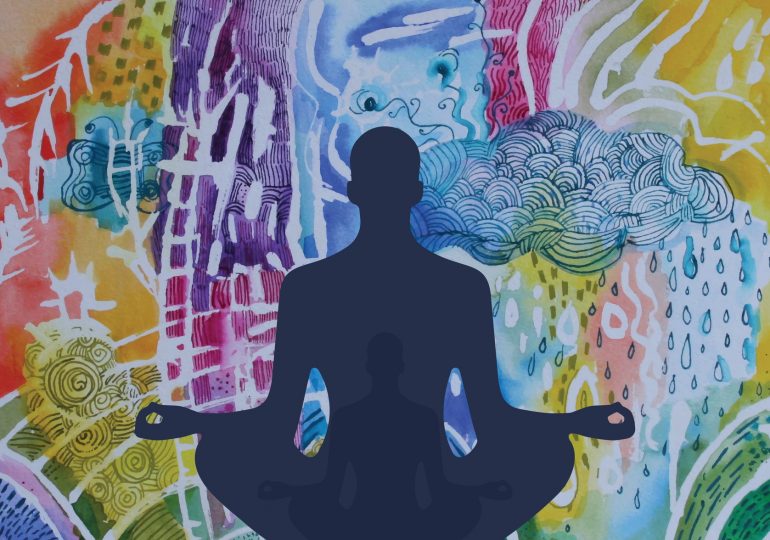Being diagnosed with a chronic illness can be a distressing and disorienting experience. Surveys of people who have chronic diseases have found that many experience a sense of powerlessness, and that they tend to view their condition as more than a threat to their health; it’s also seen as a threat to their psychological well-being, as well as their social and personal identities.
All of these experiences may be heightened among people with lupus, a complex autoimmune condition that tends to arise unexpectedly and in relatively young patients. The unpredictable and highly variable course of the disease can contribute to feelings of uncertainty and lack of control. Patients are likely to worry about how their life will change, or whether they’ll be able to pursue long-held ambitions. In many cases, their care provider won’t be able to give them definite answers to these questions.
[time-brightcove not-tgx=”true”]
While medication is often the cornerstone of treating the underlying disease, drugs alone can’t always address the feelings of stress and powerlessness that accompany a disease like lupus. It’s here that complementary and integrative forms of care may play an important role. “I think we have to understand the whole context of the person, and their need to manage the ups and downs of the disease,” says Dr. Carol Greco, an associate professor of psychiatry at the University of Pittsburgh Medical Center. “If something can bring a person a little more sense of control or agency, that’s huge.”
Greco has conducted research on complementary medicine among people with lupus. She’s a member of her university health system’s Center for Integrative Medicine, and she contributed to the creation of the non-profit Society for Women’s Health Research Living Well With Lupus toolkit. Some of her work has examined how stress-reduction therapies such as meditation and relaxation training may help people with lupus manage their symptoms. “Things like meditation and biofeedback are not typically part of the traditional medicine system, but people with lupus can use these to reduce symptoms like pain, and that gives them back some confidence and a sense that they have some control,” she says.
Here, Greco and other experts detail how complementary and integrative medicine approaches—as part of a comprehensive care plan—can help people with lupus manage all the facets of their illness.
Mindfulness, biofeedback, and other evidence-backed therapies
Lupus researchers have known for decades that stress often accompanies or precedes symptom flares. One 2004 study of lupus patients found that more than 70% reported worsening symptoms on stressful days, and a 2015 study found associations between lupus flares and a certain stress-related enzyme, which corresponds with autonomic nervous system activity.
“We know that certain things can make lupus worse, and that includes excess fatigue and stress,” says Dr. Joseph Craft, a lupus specialist and professor of medicine and immunobiology at the Yale School of Medicine. Craft says that some complementary or lifestyle approaches can help patients manage both of these challenges and their related symptoms. “There’s no magic bullet here, but I think certainly these are things that patients can address.”
Mindfulness is one form of stress-management therapy that has been the focus of both randomized controlled trials and smaller case series among people with lupus. So far, that work has found evidence that mindfulness can reduce sympathetic nervous system activity as well as activation of the hypothalamic-pituitary-adrenal (HPA) axis, both of which are associated with heightened stress. A 2022 research review in the journal Lupus concluded: “[Mindfulness-based interventions] have been shown to improve stress response, and potentially induce anti-inflammatory changes at an epigenetic level.” Furthermore, that review highlighted a more-robust body of work linking mindfulness to a better quality of life, as well as improved anxiety and depression scores, among people with lupus.
Some other forms of stress reduction have also shown promise in lupus trials. “Many people in our biofeedback and stress-management program had wonderful success in reducing their pain scores,” Greco says. Biofeedback allows people to see or hear representations of their own heightened stress or anxiety—such as increases in muscle tension and heart rate—which can help them bring their stress or anxiety under control. In one of Greco’s randomized controlled trials, people with lupus who underwent a program that included biofeedback experienced significant reductions in pain, as well as improvements in physical and psychological function, compared to a control group. That trial’s program also included a progressive muscle relaxation (PMR) component. PMR is a form of relaxation therapy that involves deliberately tensing and then relaxing the body’s muscles in a programmatic way. “That program was pretty helpful for pain, but it was also helpful for mood,” Greco says. “When a patient feels better, mentally and physically, this can improve their sense of well-being and their sense of being able to do more of the things they want to do.”
More of Greco’s work has looked into the potential benefits of acupuncture for the reduction of pain in people with lupus. Here, her group’s findings were a bit mixed, but almost half of her study’s participants experienced significant (greater than 30%) reductions in pain following 10 treatments of acupuncture, compared to no improvements among the control group. “There aren’t a lot of studies on acupuncture for lupus, but we’ve found it can have a helpful effect on pain and fatigue,” she says.
More research, including a 2015 study in the journal Arthritis Care and Research, has revealed that many of these same interventions also help reduce fatigue among people with lupus. So too can plain old exercise. “Exercise is really important, and we know it improves fatigue,” says Dr. Fotios Koumpouras, an associate professor of clinical medicine and director of the lupus program at Yale School of Medicine. A 2022 study in Disability and Rehabilitation found that 12 weeks of aerobic exercise (two exercise sessions per week) significantly reduced fatigue and, perhaps not surprisingly, improved motivation to exercise among women with lupus. Researchers are also exploring the benefits of yoga among people with lupus, although there isn’t much trial evidence to date.
Supplements are another active area of study, and some work there has found evidence of a benefit. A 2019 research review in the American Journal of the Medical Sciences found that vitamin D supplementation is associated with lower fatigue scores among patients with lupus. (Sun exposure is an established trigger for lupus flares. Since people with lupus are told to avoid exposure, vitamin D supplementation may be worthwhile even if it doesn’t lead to a reduction in symptoms.) More work in this vein has found that omega-3 supplementation may help ease inflammation in people with lupus.
Koumpouras says supplements—including herbal teas and maybe also CBD (which he’s looked into as a possible lupus treatment)—deserve more attention. He points out that many of the medications used to treat lupus, such as the calcineurin inhibitor voclosporin, are derived from natural agents in fungi. “As we unravel the ways the immune system functions, we will find more natural compounds that are helpful,” he says.
Read More: The Most Exciting New Advancements in Managing and Treating Lupus
Why doctors should support complementary therapies
Koumpouras says that some doctors too readily dismiss the benefits of complementary approaches, and he believes this is a mistake. “I think a lot of doctors don’t appreciate how effective complementary medicines can be,” he says. “There’s of course some quackery you have to be very careful with, but I think complementary and alternative medicines have an important role in the management of rheumatic disease, including lupus.”
It’s important to recognize, he adds, that many patients have to walk a long and lonely path before receiving their lupus diagnosis. According to a 2021 study in Lupus, the average time between symptom onset and diagnosis among people with lupus is almost four years. “There may be some distrust among patients because they feel that their doctors weren’t listening to them, and they had an unmet need for an early and accurate diagnosis,” he says. Endorsing a patient’s interest in complementary therapies—provided those therapies are safe—may be one way to help rebuild trust.
Greco makes a similar point. “Sometimes patients want to do more to help themselves, and sometimes they also want to work with practitioners who can give them a lot of time and consider their health in a larger context,” she says. “An integrative-medicine or CAM practitioner may devote more time just to listening, or to addressing more of the emotional side of the illness.” That has value, she says, and traditional medical providers would do well to acknowledge and respect such complementary approaches.
However, the key term here is “complementary.” While patients should be encouraged to explore safe and evidence-backed treatments such as relaxation therapy and meditation, they should be warned that these are not substitutes for their medications or other formal care strategies. “We want to encourage complementary medicine without causing harm,” Koumpouras says.
Read More: What Lupus Patients Want Their Doctor to Know
Complementary therapies are going mainstream
It’s worth noting that many large and progressive medical institutions are now moving toward what are known as “integrative care models.” These are multidisciplinary approaches that offer patients access to registered dietitians, physical therapists, cognitive behavioral therapists, and other specialists who may help them adopt the same lifestyle and complementary treatment strategies mentioned above. In other words, some medical systems are now bringing what were once seen as “alternative” or “non-traditional” forms of treatment into a patient’s formal care strategy, and there’s evidence that this is leading to measurable improvements.
“Lupus can affect any system in the body unpredictably, and because its symptoms can come and go, patients need to learn what they can do on their own to manage the ups and downs,” Greco says.
It would be nice if people with lupus could manage their illness solely with the help of non-drug methods. As every medical provider knows, prescription drugs—while helpful and often life-saving—cause side-effects and, in some cases, complications that may necessitate the use of yet more drugs. Every medical provider also recognizes that patients with a chronic disease often get “pill fatigue.” It’s hard to keep taking a pill (or pills) day after day, for years on end. But if those medicines are part of a more comprehensive strategy that includes other broadly healthy interventions—things like exercise or cognitive behavioral therapy—there’s evidence that patients may be more likely to take their medicines and to follow their provider’s plan.
Any way you look at them, complementary therapies seem to have a place in the life of people living with lupus. “It’s not uncommon in places like China to use traditional and Western medicines together,” Koumpouras says. “As we deepen and expand our knowledge, I think we’ll find even better ways to use alternative and traditional therapies.”
Leave a comment








